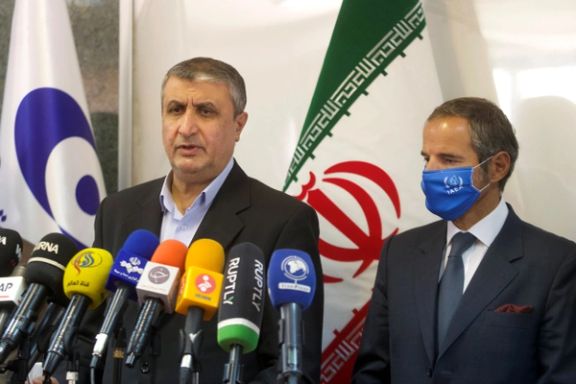Iran Boosts Enrichment In Latest Breach Of Nuclear Deal

With talks over reviving the 2015 nuclear agreement in abeyance, Iran is continuing to expand uranium enrichment using relatively advanced machines.

With talks over reviving the 2015 nuclear agreement in abeyance, Iran is continuing to expand uranium enrichment using relatively advanced machines.
A confidential report by the International Atomic Energy Agency (IAEA) to member states, seen by Reuters Monday, confirmed Tehran had brought onstream three clusters of IR-6 centrifuges at the underground Natanz enrichment plant. The 2015 agreement, the JCPOA (Joint Comprehensive Plan of Action), allowed Iran to use only IR-1 centrifuges, but Tehran began to exceed the agreement’s terms in 2019, the year after the United States left the JCPOA and imposed ‘maximum pressure’ sanctions.
The IAEA reported in August that Iran was carrying through plans announced in June to use three cascades of IR-6s at Natanz with just one at that time operational. These cascades are enriching to 5 percent, well short of Iran’s highest enrichment level of 60 percent, but using more advanced centrifuges enhances Tehran’s capacity, making it easier and quicker to achieve 90 percent ‘weapons grade’ enrichment – an aim Iran denies.
The Iranian parliament in December 2020 – following the killing of scientist Mohsen Fakhrizadeh widely attributed to Israel, which opposes the JCPOA – passed legislation it had drafted earlier despite objections by then President Hassan Rouhani requiring the installation of 1,000 IR-6 centrifuges by the end of 2021, a target the Atomic Energy Organization of Iran (AEOI) failed to meet.
By May, there were 538 IR-6 centrifuges in two cascades at Fordow and one cascade at the above-ground Natanz pilot plant. The AEOI announced plans in June to install two more IR-6 cascades underground at Natanz, in addition to one already planned there, which appeared to bring the AEOI in line with the 2020 law.
While IR-6 centrifuges have been used at Fordow and at Natanz above ground to enrich to 60 percent, some specialists have suggested Iran faces technical difficulties with more advanced machines with progress also hampered by the June 2021 attack on the manufacturing plant at Karaj, also attributed to Israel.
Biden anxiety
Talks aimed at restoring the JCPOA have appeared frozen since April, when Iran and the US exchanged several communiques through European Union mediators. Some analysts attribute the delay to the US November 8 Congressional elections with President Joe Biden anxious not to add Republican criticism of Iran policy to the unpopularity of high gasoline prices.
While the three European JCPOA signatories – France, Germany and the United Kingdom – have aligned with US criticism of Iran over its responses to IAEA questions over pre-2003 nuclear work, Russia and China have argued that both Washington and Tehran need to negotiate more seriously.
Iran has said both that the pre-2003 IAEA enquiries, centered on unexplained uranium traces, should be shelved, citing a 2015 precedent, and that it needs ‘guarantees’ against economic damage should the US leave a renewed JCPOA and reimpose sanctions. Wang Chang, deputy head of China’s IAEA mission, told the IAEA board last month that there was “neither urgency nor proliferation risk” in “possible nuclear activities that took place decades ago, if at all.” China is an ally of Iran and the only major buyer of Iranian oil, ignoring US sanctions.
Reports in August that US-Iran contacts had found a form of words dealing with the IAEA enquiries apparently came to naught. IAEA director-general Rafael Mariano Grossi in an interview August 23 suggested questions over the uranium trades might be better tackled with the JCPOA back in place. Grossi met with AEOI head Mohammad Eslami in New York in September.